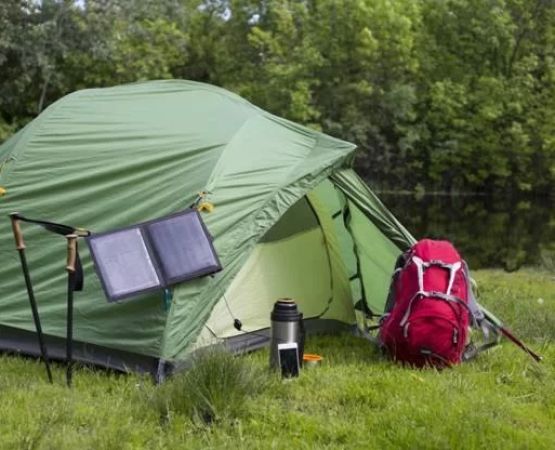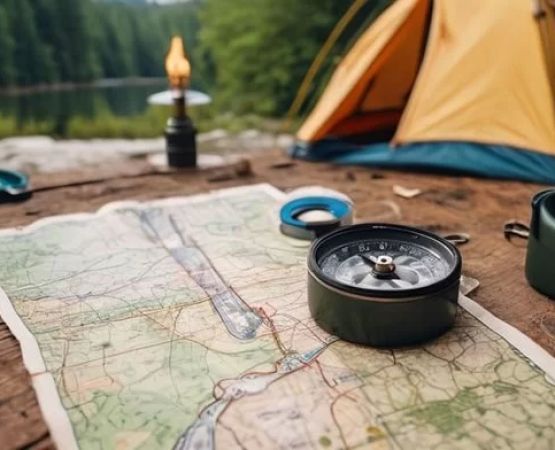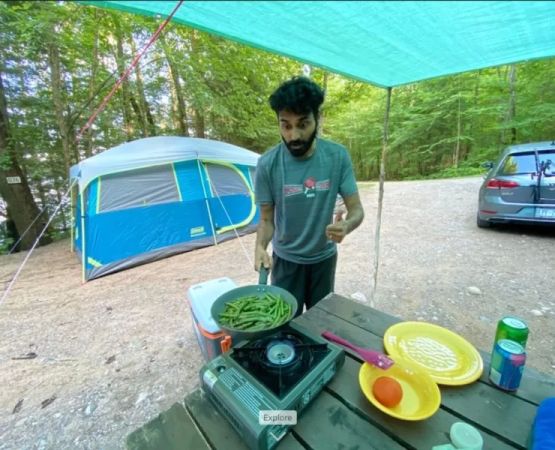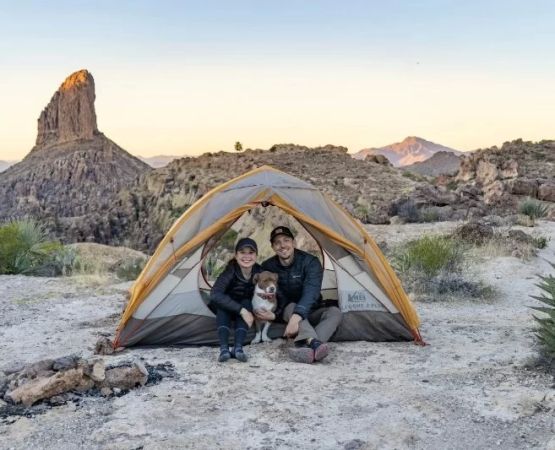How to Stay Safe While Camping Near Wildlife: Essential Tips for a Safe Outdoor Experience
- 1. Understanding Wildlife Behavior and How to Stay Safe
- 2. Choosing the Right Campsite to Minimize Risks
- 3. Proper Food Storage and Managing Attractants
- 4. Essential Camping Gear to Keep You Safe
- 5. How to Prevent Wildlife Encounters While Camping
- 6. Real-Life Story: Staying Safe During a Wildlife Encounter
1. Understanding Wildlife Behavior and How to Stay Safe
Camping in areas near wildlife can be an incredibly rewarding experience, allowing you to connect with nature and enjoy the great outdoors. However, it also comes with certain risks, especially when it comes to wildlife encounters. Understanding the behavior of animals that live in these areas is crucial for staying safe while camping near wildlife.
Wildlife is often curious, and some species, like bears and raccoons, may be attracted to human food and smells. Animals are generally not aggressive unless they feel threatened, cornered, or provoked. For example, bears may be searching for food, and if they sense an easy meal, they might approach your campsite. However, these animals do not seek out humans and will usually avoid you if they can. It’s important to remain calm and avoid actions that could be seen as a threat to wildlife.
One of the first steps in staying safe while camping near wildlife is educating yourself about the species in the area. Knowing what animals you may encounter and how to react to different situations is key to ensuring your safety and the safety of the animals around you.
2. Choosing the Right Campsite to Minimize Risks
When it comes to camping near wildlife, selecting the right campsite can make all the difference in preventing encounters with animals. Ideally, you want to set up camp in a location that minimizes contact with wildlife, especially predators like bears and mountain lions.
Look for campsites that are far from known wildlife trails, water sources, or areas with dense vegetation where animals might be feeding or resting. High, open ground is usually safer than dense forest areas because it provides more visibility and reduces the risk of animals approaching your campsite unnoticed. Avoid setting up near food sources like berry bushes or near carcasses, as these can attract scavengers.
Additionally, choosing a campsite that is well-maintained and frequently used by other campers can provide some added protection. Animals tend to avoid areas with human activity, so staying in popular campsites might decrease the likelihood of encountering wildlife in the first place.
3. Proper Food Storage and Managing Attractants
One of the most important aspects of staying safe while camping near wildlife is properly managing food and attractants. Animals, especially bears, have an exceptional sense of smell and can easily be drawn to your campsite by the scent of food. Proper food storage is crucial to prevent animals from coming near your tent or campsite.
Always store food and scented items (like toiletries or sunscreen) in airtight containers and keep them in bear-proof containers or hang them in trees away from your tent. Many campsites provide bear lockers or food storage boxes to store your supplies safely. If you’re camping in an area with bears, it’s crucial to follow these protocols to avoid attracting them to your site.
Don’t leave food unattended or cook close to your tent. It’s a good idea to cook and eat at least 100 yards away from your sleeping area. After meals, clean up thoroughly by washing dishes, wiping down surfaces, and disposing of trash properly in bear-proof bins. Minimizing food odors will help deter wildlife from venturing near your campsite.
4. Essential Camping Gear to Keep You Safe
Having the right camping gear is another important factor in ensuring your safety when camping near wildlife. Here are some essential items to consider bringing along to minimize risks and improve your overall safety:
- Bear Spray: If you're camping in bear country, bear spray is a must-have. It’s an effective deterrent against bears and other large animals, and carrying it on your person can help you feel more secure during hikes or when you leave your campsite.
- Proper Lighting: Keeping a flashlight or headlamp with you at night is essential for staying safe. Wild animals are more active at night, and good lighting will help you see potential threats and deter animals from getting too close to your camp.
- First Aid Kit: A well-stocked first aid kit is essential for any outdoor activity, especially when camping near wildlife. Accidents can happen, and it’s important to be prepared for minor injuries or encounters that may require immediate attention.
- Sound Deterrents: Noise-making devices like whistles or air horns can help keep animals away from your camp. Many animals, especially predators, tend to avoid areas with loud sounds.
Having these tools can provide you with a greater sense of security, knowing that you’re prepared to handle any unexpected situations that might arise while camping near wildlife.
5. How to Prevent Wildlife Encounters While Camping
Preventing wildlife encounters is the ultimate goal when camping near animals. While it’s impossible to guarantee you’ll never come across wildlife, there are several steps you can take to greatly reduce the risk:
- Keep a Safe Distance: If you do encounter wildlife, keep a safe distance. Do not approach animals or attempt to feed them. Most wildlife will leave if they feel unthreatened and given space.
- Secure Your Tent: Make sure your tent is properly sealed and your sleeping area is free from any food or trash. Do not leave food inside your tent, as it will attract animals.
- Camp During the Day: Try to arrive at your campsite during daylight hours. This will allow you to set up and prepare your site before animals are more active during the night.
- Follow Local Wildlife Regulations: Every wildlife area has specific regulations to help protect both campers and animals. Be sure to follow these rules, which often include no feeding of wildlife, proper food storage, and guidelines for bear encounters.
By taking these preventative measures, you can significantly lower the chances of having a wildlife encounter while camping and ensure your safety as well as the safety of the animals.
6. Real-Life Story: Staying Safe During a Wildlife Encounter
During one of my camping trips in the Rocky Mountains, my friends and I had the unique experience of encountering a black bear while hiking. We had taken every precaution—storing food properly, using bear spray, and camping in an area with ample visibility. Despite these precautions, the bear appeared at the edge of our campsite early in the morning.
Luckily, we followed all the right steps. We calmly backed away from the bear without turning our backs and made loud noises to alert it of our presence. After a few tense moments, the bear lost interest and wandered off. It was an unforgettable experience, but also a reminder of how important it is to stay vigilant and prepared when camping near wildlife.
Although the encounter was brief and ended without incident, it was a valuable lesson in how to stay safe while camping near wildlife. By following proper safety procedures and respecting the animals, we were able to enjoy our trip while minimizing risks.






